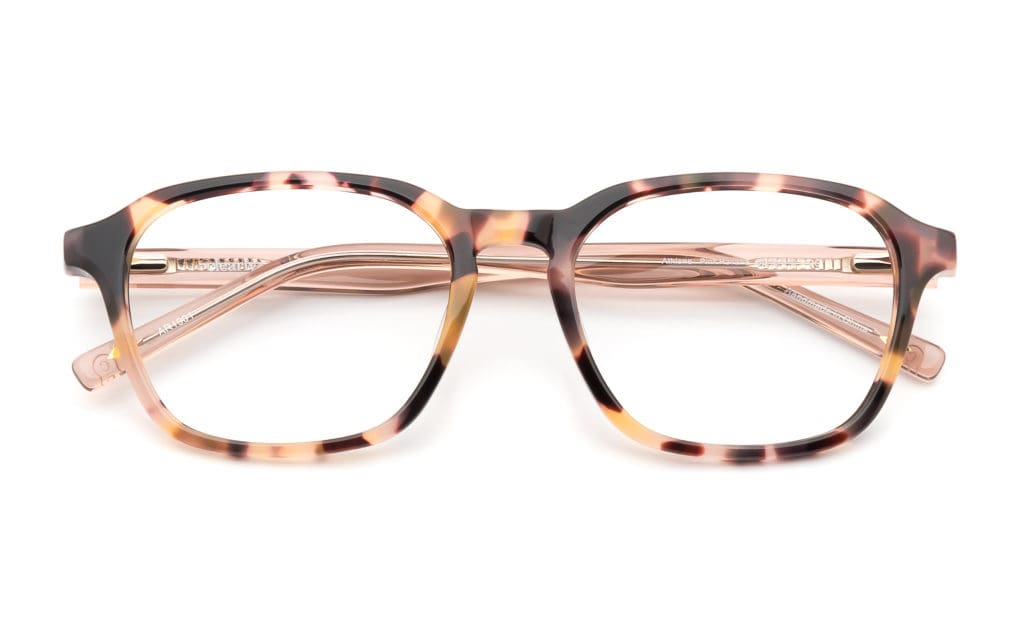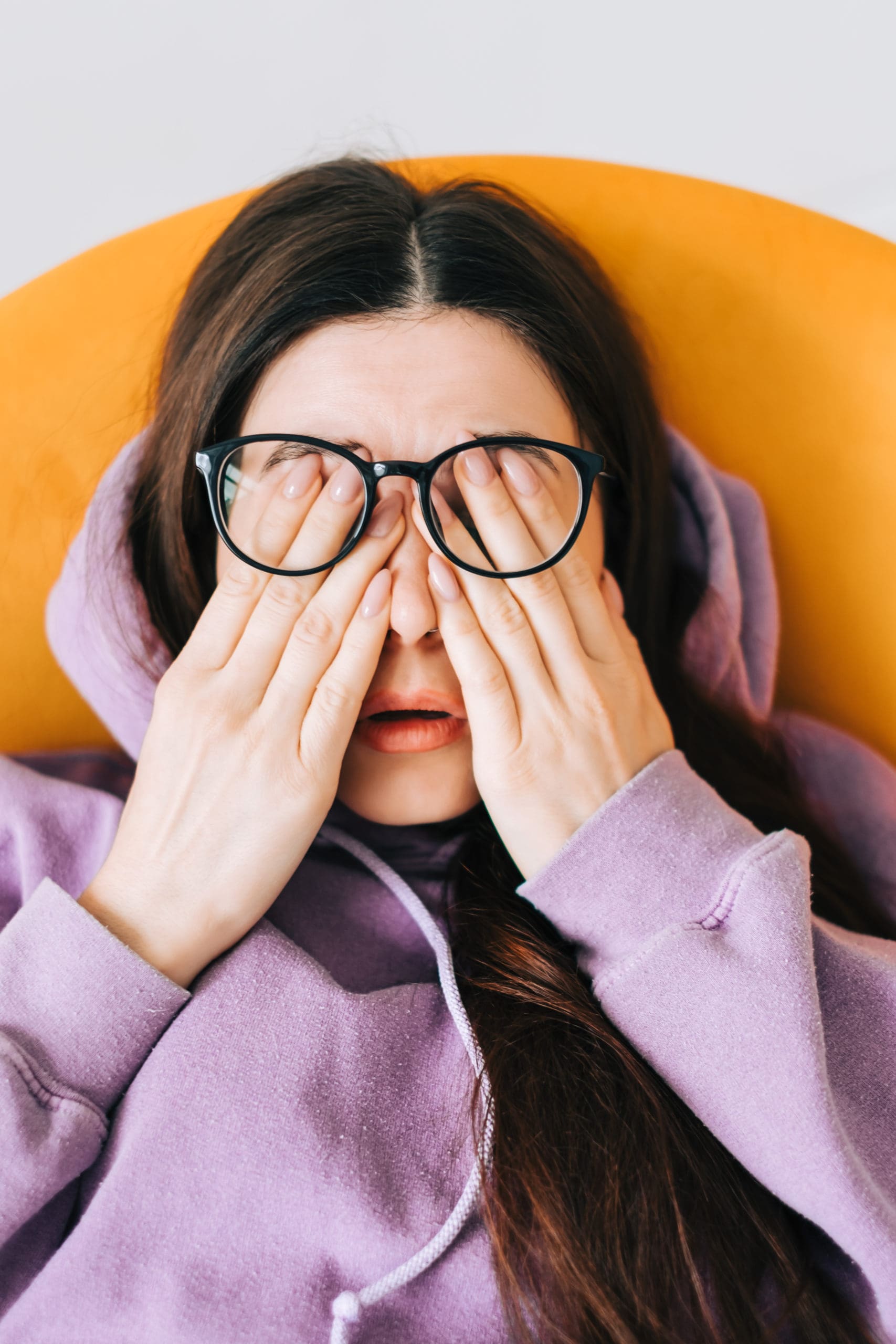Our screen time has increased just a teeny tiny little bit in the past year. Not great for a lot of reasons. Our mental health and focus are impacted by mindless doom-scrolling, and the lines around our necks are increasingly prominent as a result of constantly looking down at our devices. But the thing that’s got us most concerned is blue-light exposure.

“Our eyes see the world by light entering them. Light is composed
of many wavelengths, and what we see is a combination that goes from blue-violet—short wavelength, high energy—to red,” explains optometrist Dr. Justin Asgarpour, a partner at online eyewear retailer Clearly. “Blue-violet sits next to UV on the spectrum, which is even higher energy, and the damage it can do is well documented. The impact of blue light is not as well developed in terms of research, but we know there are some implications.”
The biggest source of visible light is the sun (the reason the sky is blue is that we see blue light); we’re obviously exposed to a large amount of that during the daytime. So why all the hoo-ha about it now? Because the screens of devices like phones, tablets, TVs and computers emit blue light “and, with the massive uptick in usage over the past nine months, experts are concerned about the additional exposure. Phones and tablets are particularly worrisome because we tend to be looking at them at close range for many hours a day.
According to Dr. Asgarpour, health implications under investigation include sleep disturbance (our brains believe that blue light means daytime, so late-night phone scrolling can lead to insomnia) and eye strain. Most concerning: the possibility that blue light can cause oxidative stress, and that can damage retinal tissue. This could lead to macular degeneration, a leading cause of blindness. The doctor says children may be particularly vulnerable to potential damage, since their lenses are clear and therefore more blue light can enter the back of the eye. Also, anyone who has had cataract surgery is at risk, since the replacement lens is clear.

Oxidative stress isn’t just bad for our eyeballs. “The general link between oxidative stress and aging has been well documented, hence the concern for blue light contributing to premature aging,” explains dermatologist Dr. Marcie Ulmer, who cites collagen breakdown and pigment darkening as two possible consequences. “It may also have indirect effects, as we know that blue light can disrupt the natural circadian rhythm, negatively affecting our sleep patterns.”
She cautions that additional studies are required to better understand the full effect of blue light on skin, but says patients with skin of colour seem more prone to hyperpigmentation caused by blue light than patients with lighter skin. “Melasma, a chronic skin condition with blotchy pigmented patches typically on the face, may be worsened by blue-light exposure, too,” she says.

There are a few measures we can take to limit our exposure. Adjust
the settings on phones, tablets and monitors. Most devices allow you
to fiddle with the colour, removing some of the blue tones, though
these might not be suitable for, say, designers who need to see shades very precisely. You can also buy blue- light reflecting glasses, and these can be made either with regular glass or to your corrective prescription.
“I use themselves as I find them more comfortable, less straining, and I’m potentially benefiting my eye health,” says Dr. Asgarpour. While he isn’t suggesting that we give up our devices, he says there is one simple technique to reduce the stress on our eyes. “Every 20 minutes, look 20 feet away from the screen for 20 seconds. It allows the focusing mechanism to work less hard.”
Dr. Ulmer says that, in terms of protecting skin, she gives the same advice as for protection from sunlight: “Apply a daily antioxidant and a daily sunscreen each morning.” Antioxidants are designed to mitigate the effect of oxidative stress and sunscreens may block blue light. “When we think about blue-light protection, mineral sunscreens with iron oxide are the best choice. Topicals containing pigments and metal oxides absorb, reflect and scatter light, providing photoprotection beyond the UV spectrum,” she says, noting there’s need for more research on what sunscreens can do to block blue light, and there’s no labelling system or rating.
Whatever we do, it’s worth remembering that we can’t block all blue light—who wants to miss out on seeing blue skies? And both docs emphasize that, while there’s debate about how harmful blue light can be, there’s no question about UV. That means sunscreen every day, and sunglasses even if you think you don’t need them.
“Even on a snowy day or an overcast day, UV penetrates the atmosphere,” says Dr. Asgarpour. That means we could end up needing a whole wardrobe of specs—prescription, blue light, sunglasses and more, which is the perfect excuse to start shopping. It’s for our health, you see. —Aileen Lalor

Be the first to comment